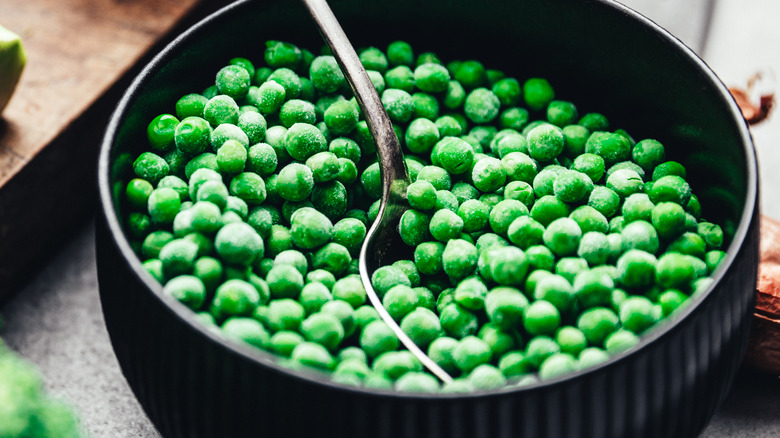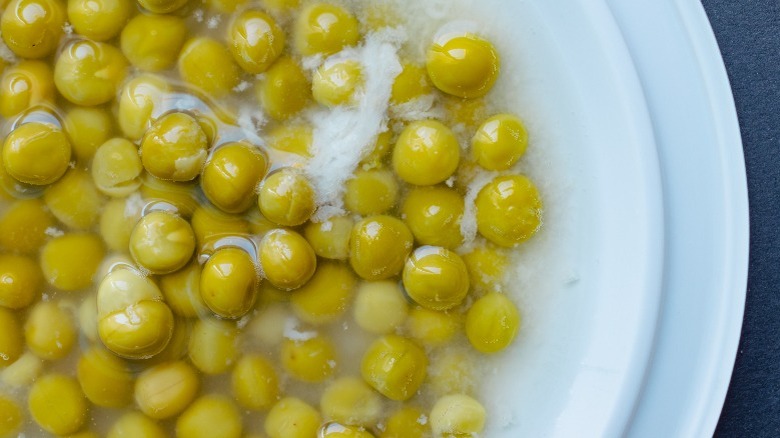How To Store Peas The Right Way
Green peas are a powerful little legume. While they are often dismissed as a boring childhood side dish for many, they can improve a variety of dishes with their sweet, vegetal flavor and their wonderfully tender texture. Not to mention that they are also incredibly nutritious, as they are packed full of fiber and many different vitamins and minerals. With so many benefits, it's a good idea to keep peas on hand in your kitchen so that you can spruce up your meals at a moment's notice. Of course, if you choose to do this, you'll need to know exactly how to keep your peas fresh and tasty until you use them.
Fresh green peas, like many vegetables, fare best when stored in a cold environment. To preserve their quality, you will want to place them in the crisper drawer of your fridge, where they will last in their pods for about a week. It's also a good idea to store them inside a perforated container to promote proper airflow. You can further extend the shelf life of your peas by blanching them with a small amount of sugar, rinsing and cooling them with cold water, and then freezing them. When stored this way, they can last anywhere from eight months up to a year.
How to tell when peas have gone bad
Even with proper storage, peas will eventually expire. It's important to examine the peas that you have been storing for signs of spoilage to prevent yourself from accidentally consuming harmful pathogens that could make you sick. Use your senses of sight, smell, and touch to assess the peas for freshness. Uncooked peas should have an undeniably bright green color, so if your peas have turned a sickly brown, yellow, or gray, or if they show visible signs of mold growth, they have gone bad. Additionally, the peas should not have a strong smell or a mushy, slimy texture.
If any of these traits are present, it is best to toss them rather than eat them. Of course, the easiest way to ensure that you make the most of your peas before they spoil is to simply use them in more recipes. This versatile vegetable spans all kinds of cultures and cuisines and can be used in both sweet and savory meals. We recommend adding them to some crispy fried samosas, throwing together a refreshing pea pesto, or even making them the star of this unexpected spring pea mojito.

